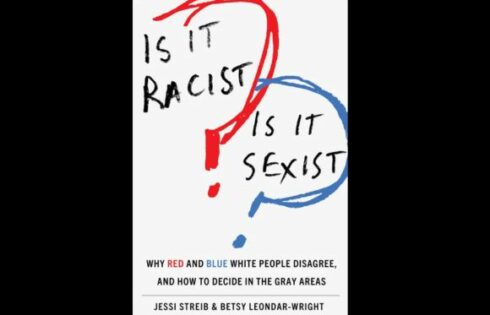
It seems my article from last Saturday about the use of “cli-fi” — climate fiction — stories in various college courses attracted a bit of attention.
Dan Bloom, who coined the term “cli-fi” in 2007, has a site devoted to news and stories about the genre. I had linked to a post of his, and upon discovering my column he tweeted news of it out to all of his followers. This included Vanderbilt’s Ed Rubin, who’s begun teaching a couple of courses on cli-fi.
Rubin reacted to a couple of points in the piece; you can decide for yourself if his claims hold any water.
Bloom has since kept me in the loop about various writers’ and bloggers’ opinions regarding climate fiction stories. Some I agree with, but I many I don’t … mainly because they seem to have been chosen due to fitting an ideological agenda instead of actually pertaining to the subject.
The University of Winnepeg’s Heather Snell’s course description for a class which includes cli-fi is another example:
We study various theoretical and critical strategies for reading YA [Young Adult] texts, including feminist, queer, transgender, postmodern, posthuman, postcolonial, critical race, cli-fi and ecocritical; cultural assumptions about children and childhood; trends in educational theory and practice; the economic and political contexts of the production, consumption and marketing of YA texts for young adults; and popular culture and media for young adults.
Somewhat amazingly to me, Bloom had never read the superb Timescape by Gregory Benford, winner of the 1980 Nebula and British Science Fiction Awards for Best Novel.
Timescape is at the top of my “best cli-fi” list. Benford masterfully weaves ecological disaster, history, character development, and time travel into a perfect yarn which you won’t be able to put down.
The algal and diatom blooms which are growing across the globe (and slowly killing it) are tied to “Big Chemical” (DuPont even gets an specific mention). A scientific team from 1998, using a tachyon beam, sends a message back to 1962 in the hopes that the looming apocalypse can be averted. The John F. Kennedy assassination plays a role, and the nature of time itself is questioned.
A story which probably never will be used in a college cli-fi course (unless the purpose is to mock it) is Fallen Angels by Larry Niven, Jerry Pournelle, and Michael Flynn (mentioned in last week’s column). In this near-future story, Green Parties have assumed control in many governments, including especially that of the US. Touching on the theme of this past column of mine, the Greens have clamped down on the use of science and technology which isn’t in line with their political ideology.
Despite the onset of a new ice age due to the Green policies — complete with glaciers inexorably moving southward from Canada into the contiguous 48 states — household thermostats are mandated to be set no higher than 55 degrees and technology is largely considered heresy. Scientists have moved “underground,” so to speak, and are in search of a pair of space station astronauts who’ve crashed landed.
RELATED: ‘Cli-fi’ and the incorporation of climate change/global warming into college curricula
Soylent Green, adapted from the book Make Room! Make Room!, is rightly considered a classic despite it being based partly on the outlandish overpopulation predictions of Paul R. Ehrlich. But the other disaster in the story is global warming (just note how virtually every scene shows Chuck Heston and the other stars sweating like mad), and, as such, global food supplies are dwindling.
Progressives will like Soylent, too, because a nasty, monolithic corporation is making food out of human beings and lying to the public about it. Not to mention, they bump off anybody who manages to learn the truth. One can only hope that Heston’s film-ending proclamation will change things!
Children of Men is a story frequently mentioned in “best of” lists of climate catastrophe tales; however, the film makes no explicit reference as to the reason behind its human fertility crisis. (Michael Caine’s character does briefly hypothesize about pollution being the culprit.) But sci-fi and cli-fi fans alike may know the book on which the film is largely based: Greybeard by Brian Aldiss.
In the novel, nuclear bomb tests in space have caused the natural radiation belts surrounding Earth to “sink down” to atmospheric levels causing mass sterilization. As in Men, it’s centered around London and the UK, and the existing generation appears to be the last on Earth. But also like in Men, there’s a glimmer of hope at tale’s end …
An underrated (and fun) film is 1996’s The Arrival, starring Charlie Sheen. Global warming is explained — it isn’t due to the greenhouse gasses man has been emitting into the atmosphere; it’s due to Ron Silver and his alien horde which have established bases in Third World countries (little-to-no environmental regulations!) from which they are heating up the Earth.
Why? To make it like their planet, natch!
Silver’s alien tells Sheen like it is when the latter demands to know “the why”:
“We’re just finishing what you started. What would’ve taken you 100 years we’ll do in ten. If you can’t tend to your own planet, none of you don’t deserve to live here.”
For what it’s worth, there are numerous websites that list films like Blade Runner and the Matrix and Mad Max series in their eco-Armageddon lists. While these films are certainly worthy, the climate/ecological aspect of their stories doesn’t play a very significant role. (However, if you’ve seen the terrific Animatrix compendium, you’ll know the history behind The Matrix and its sequels, and it does have a rather significant “climate factor.”)
Similarly, I used this as the basis when considering …
Those Not Really Worth Your While:
You can’t really find a better advertisement for catastrophic global warming than Waterworld starring Kevin Costner. The entire planet is now one big ocean thanks to runaway warming, but there are tales of a mythical “Dryland” which, presumably, are the tips of the Himalayas. And they’d really have to be these (former) mountains, considering how far underwater the city which Costner takes a guest is located.
The story is boring, and Dennis Hopper and his “smokers” only serve to add a ridiculous dimension to the film. Oh, and don’t forget the “in-your-face” factor of the Exxon Valdez as Hopper and company’s base of operations.
The Day After Tomorrow acts much like Al Gore, the New York Times, and other doomsayers which have made outlandish claims (that didn’t come true) in the hopes of “crucial action” being taken on behalf of Mother Earth. In it, scientist Dennis Quaid discovers evidence that the planet’s climate is about to radically shift, and does it ever; ironically, everything man has done to warm the planet thrusts it smack into a new ice age.
As noted last week, the science behind the film is asinine (openings to the troposphere which cause virtually instantaneous freezing with temperatures plunging to -150 degrees?), and Republicans fill the stereotypical role of villain (an obvious Dick Cheney stand-in, and a situation reversal regarding immigration with Mexico). Oh, and don’t forget that Quaid is also superhuman: He walks from Philly to New York in the worst blizzard in history to rescue his son (Jake Gyllenhaal).
Lastly, Damnation Alley’s ecological premise is directly tied in to the aftereffects of an all-out nuclear war. Insane storms wrack the planet, and stars George Peppard and Jan-Michael Vincent have to battle house-sized scorpions and killer cockroaches on their way to a safe zone located in … Albany, New York?? Worth a look, but only with Mystery Science Theater 3000-style accompanying commentary.
Like The College Fix on Facebook / Follow us on Twitter
RELATED: Feds pay university $450K to scare kids about climate change
IMAGE: Shutterstock







Please join the conversation about our stories on Facebook, Twitter, Instagram, Reddit, MeWe, Rumble, Gab, Minds and Gettr.